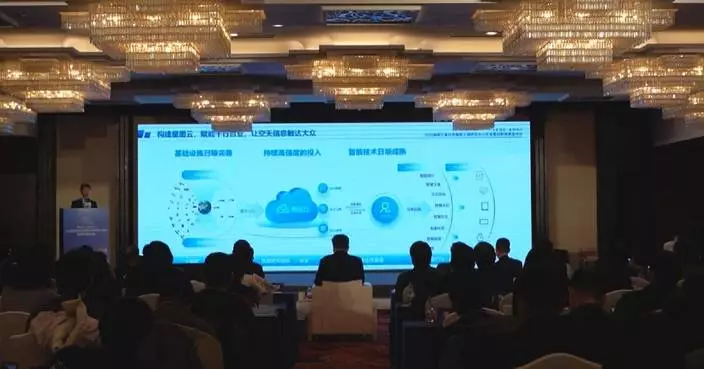Researchers at China's Huazhong University of Science and Technology (HUST) have made significant advancements in the exploration and development of lunar base construction techniques, with an aim to put humanity's quest for establishing sustainable extraterrestrial settlements into reality.
Through extensive research, a team from HUST has identified and validated several promising solutions to addressing the unique challenges posed by the ultra-high vacuum environment on the lunar surface.
As the exploration project started in 2015, the team has dedicated itself to the study and research on how to build a human settlement on the moon, contributing more to the country's lunar mission.
At the National Center of Technology Innovation for Digital Construction based in Wuhan, capital city of central China's Hubei Province, a lunar station where houses look like eggshells in oval structure is on show, with a name of "Yuehuzun," or "Moon Pot Vessel."
"The eggshell-shaped 'Yuehuzun' can grapple with the extreme environmental challenges on the moon. What's more, its design features a two-story and hollow structure that incorporates an internal heating system. It can reduce the consumption of materials, so a balance between how it is consumed and how it performs can be achieved," said Zhou Cheng, a professor at the center.
Inside the Yuehuzun each, there is an airbag which can both resist moonquakes and has a high performance of thermal insulation so that they can serve as good working and living spaces for astronauts on the moon.
Building stable and solid houses on the lunar surface was once a daunting problem that pretty bewildered scientists worldwide decades ago.
The Chinese scientists have long found the 3D printing technology is an encouraging solution to this extraterrestrial construction conundrum. And through years' efforts, the solution has got more mature than it was initially proposed.
"The 3D printing technology allows us to quickly build some structures on the lunar surface. It is a method that enables us to use in-situ materials, and also a way to complete large-scale construction on the lunar surface," said Zhou.
China's Chang'e-6 probe touched down on the far side of the moon on Sunday morning. And then the probe has completed the most important part of its lunar adventure as its sample-loaded ascender lifted off from the moon's far side on Tuesday morning. Over the past several days, the Chang'e-6 mission has grown into a trending topic on social platforms at home and abroad.

Chinese scientists press ahead with lunar base construction project









